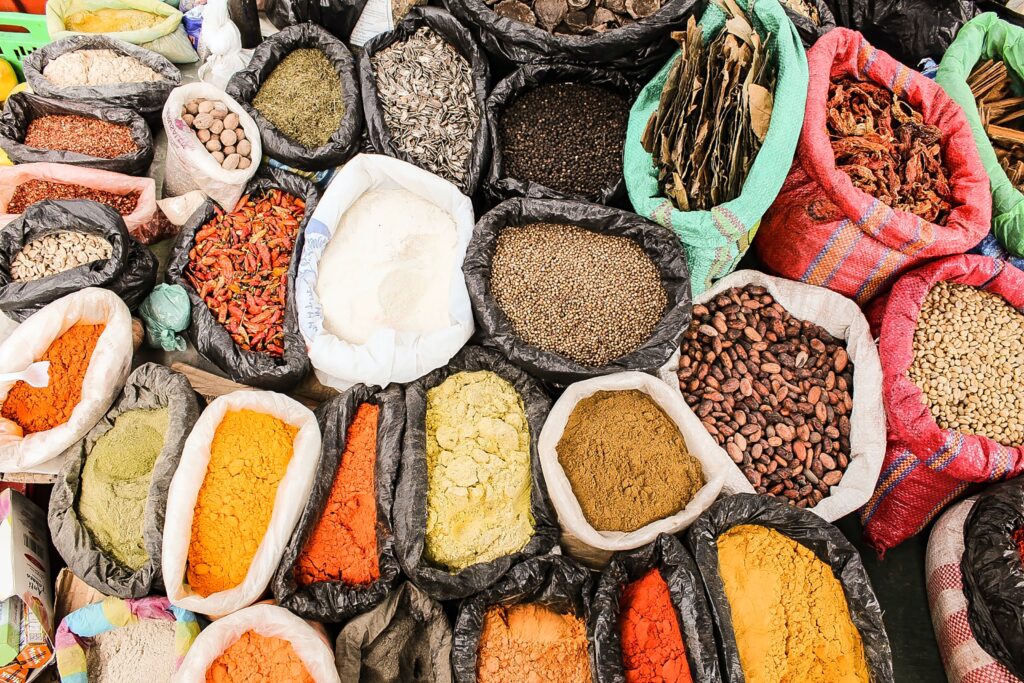A variety of spices are used across India. Each locality has its specialty and characteristics, and a mixture of spices. India is extensively known for the numerous spices which are called Masala in Hindi. These are also referred to as the “heart” of the Indian’s kitchen.

More Than Just Food
In the ancient days, spices were considered as precious as gold and very much static and reliable in terms of trade across the global continents. The traders usually traded with the various countries by sea route.
If you taste dishes across India you will find that there are huge variations in dishes prepared in every part. Spices are not limited to the enhancement of taste and aroma of food only; they also form a part of tradition being followed. The combination of spices brings incredible variety to the Indian cuisine.
The spices are commonly used for extra flavor in various dishes and sometimes they aromatically act as the kingpin of taste as well as the heartbeat of distinct foods. There are a variety of spices in the market and each has a very unique flavor. The process of their combination and mixture gradually changes the whole characteristics of dishes.
Garam Masala
Garam Masala (Hot Spices) a spice mix is nothing but a blend of the Indian spices which is generally in the dry or paste form and is used for making dishes and beverages more flavorful. The flavor of the Garam Masala is generally contained in the volatile oils which absorb the masala very quickly. Further, the grinding and packing conditions also play an important role in the aroma of spices.
What Is So Special About Spices?
Spices are full of health benefits and often have medicinal usage. It protects us from various diseases and the ill-effects of preserved food. It also works as antioxidants and acts as natural preservatives which leads to higher nutrition value enhancement.
The spices are further categorized into basic, complementary, and aromatic forms.
Essential Categories of Spices in Every Kitchen
Some of the basic spices found in almost every Indian household include jeera (cumin seeds), methi (Fenugreek), red chilli, hing (asafetida), turmeric powder, yellow and black mustard seeds, etc. Certain spices in India have medicinal benefits and antioxidants. The main spices exported from India are Mustard seeds, cumin seeds, coriander seeds, turmeric, Black Pepper, Cinnamon, and cardamom.
The complementary spices are the ones that are usually added for some extra flavour to distinct dishes along with the basic ones.
The aromatic spices, as the name suggests, add some aroma to the dishes and food items. Some of the aromatic spices are cloves, mace, cardamom, nutmeg, saffron and bay leaves, etc.
Another way of using spices is to purchase them in fewer quantities at first. Spices usually retain their ideal properties at very low temperatures. As we mentioned, spices are a really important part of every Indian recipe and it truly gives the food a soul.
Interesting Facts About Spices Unknown to Many
- Peppercorns, a very common ingredient in most Indian dishes, have been in use for the past 4000 years.
- Nutmeg and Mace are two different spices produced from a single tree called Nutmeg.
- Cardamom or Elaichi, which is known for its wonderful fragrance, is one of the most expensive spices.
- Saffron or Kesar as we call it, is almost as expensive as gold.
- Turmeric is loaded with benefits. It acts as an antiseptic and is known to bring the glow to the skin. In Hindu culture turmeric or Haldi is an important part of most auspicious ceremonies, like marriages and pujas.
- Salt production was started in India 5000 years ago and was used to pay the salary to Roman soldiers.
- Red peppers contain more Vitamin C than lemon.
Exportation of Indian Spices
The spices of India are exported to many countries around the globe. The trading relations of other countries with India started because of spices. The USA started importing spices from India back in the 18th century.
Spices Board is constituted under the Spices Board Act 1986 and its headquarters are in Kochi, Kerala. It sustains under the Indian government regulatory and export promotion agency.
Countries to which India exports
Major exports are made to the USA, UK, China, and many other countries of Europe and the Middle East.
India exports around 75 varieties of spices and therefore it is known as “homes of spices”. Mint is the highest exported spice followed by chili, cumin, turmeric, coriander, etc.
Spices play a very prominent role in Indian cooking. Spices usually retain their ideal properties at very low temperatures, and can, therefore, be stored for a long time.
